THE DORYPHOROS IN HELLENISTIC IMAGES OF POWER
September 6, 2022
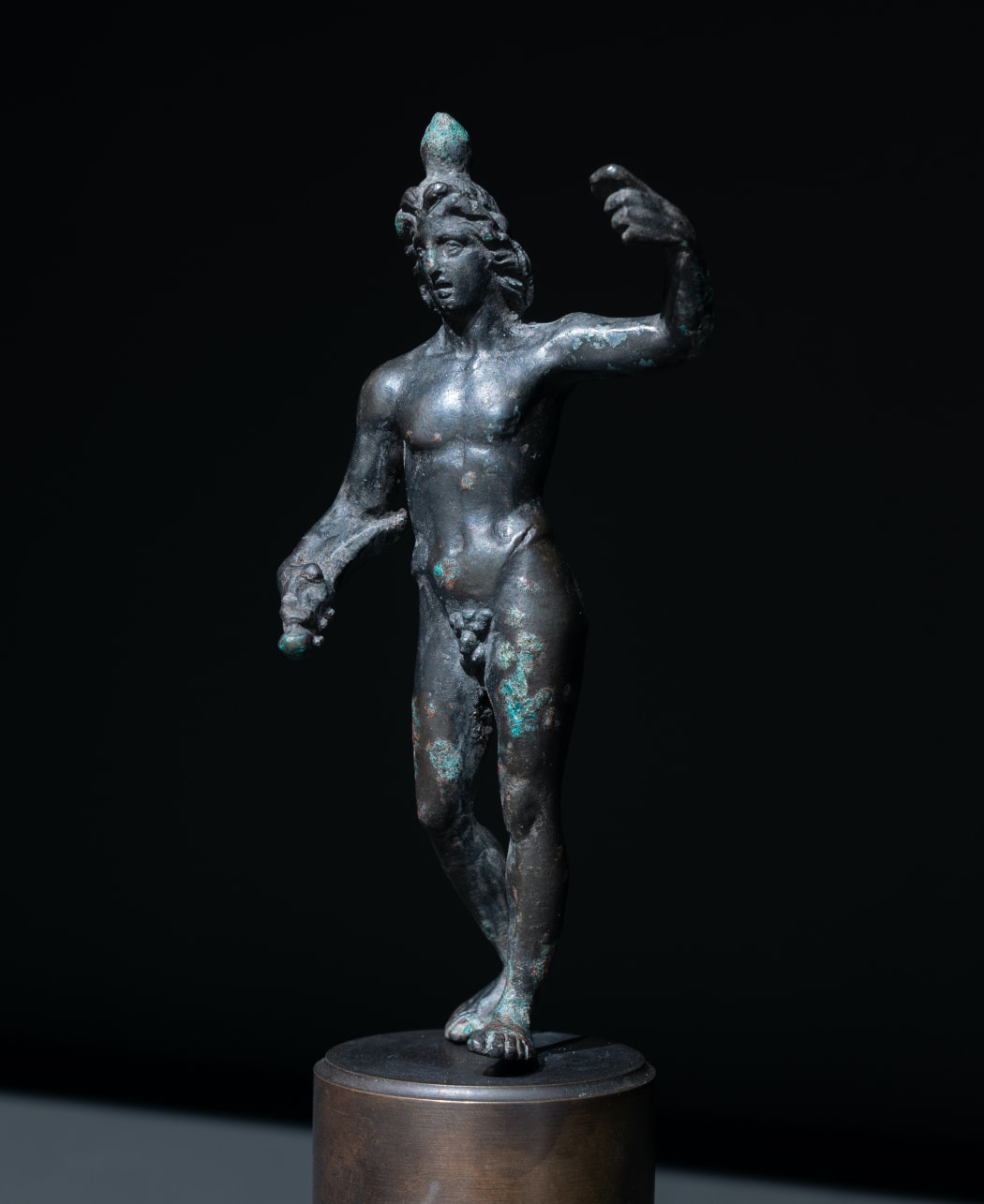
The image of the spear-bearer ‘Doryphoros’ is arguably one of the most important in Classical art. Polykleitos’ Doryphoros with its revolutionary symmetria and posture is rightly renowned for its resounding contribution to the history of western art. However, the fact that Polykleitos chose that subject to best embody his Canon of proportion is surely meaningful: the subject of spear-bearer also warrants consideration.
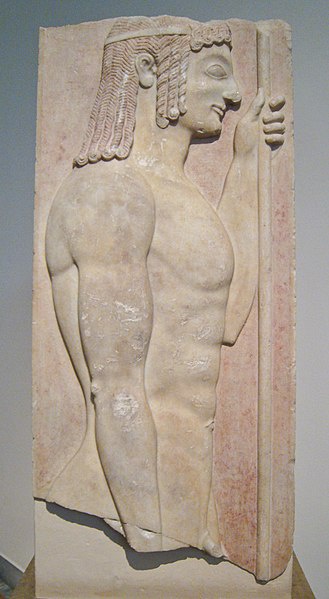
AN ARCHAIC MARBLE GRAVE STELE OF A SPEAR BEARER
Circa 6th century BC
Athens, National Archaeological Museum
Athens, National Archaeological Museum
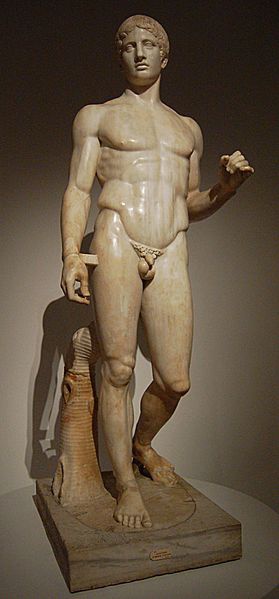
A ROMAN MARBLE STATUE OF THE DORYPHOROS
Circa 1st century BC
National Archaeological Musuem, Naples
National Archaeological Musuem, Naples
The image of the nude muscular young man with one arm raised to hold a spear has its origins in archaic Greece and 6th century marble grave stelai survive which depict kouros-like male figures holding spears. These reflect the idealization of the young warrior, the hoplite, a potent symbol of Greek arete. Polykleitos confirms the importance of the subject and revives it in a contemporary format of dynamic strength and physical perfection, the epitome of the athletic Greek youth. The heroic nudity and the spear may be seen to promote a connection to mythological heroes such as Achilles and the Dioskouroi, and to Zeus who is often depicted with a spear.
This statue seems to look at Zeus and say:
‘Keep thou Olympos: me let earth obey!’
(Plutarch, De Alexandri Magni fortuna aut virtute 2.2)
‘Keep thou Olympos: me let earth obey!’
(Plutarch, De Alexandri Magni fortuna aut virtute 2.2)
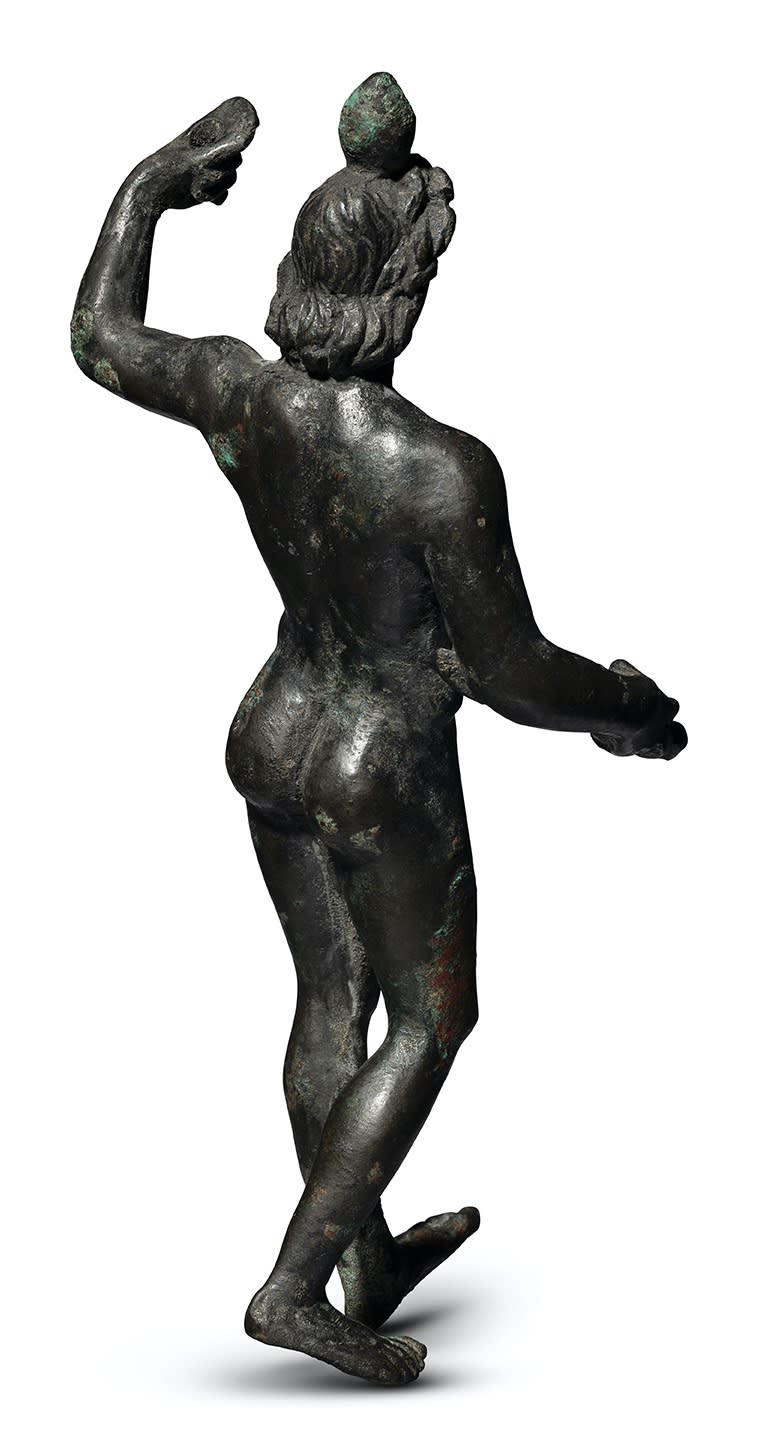
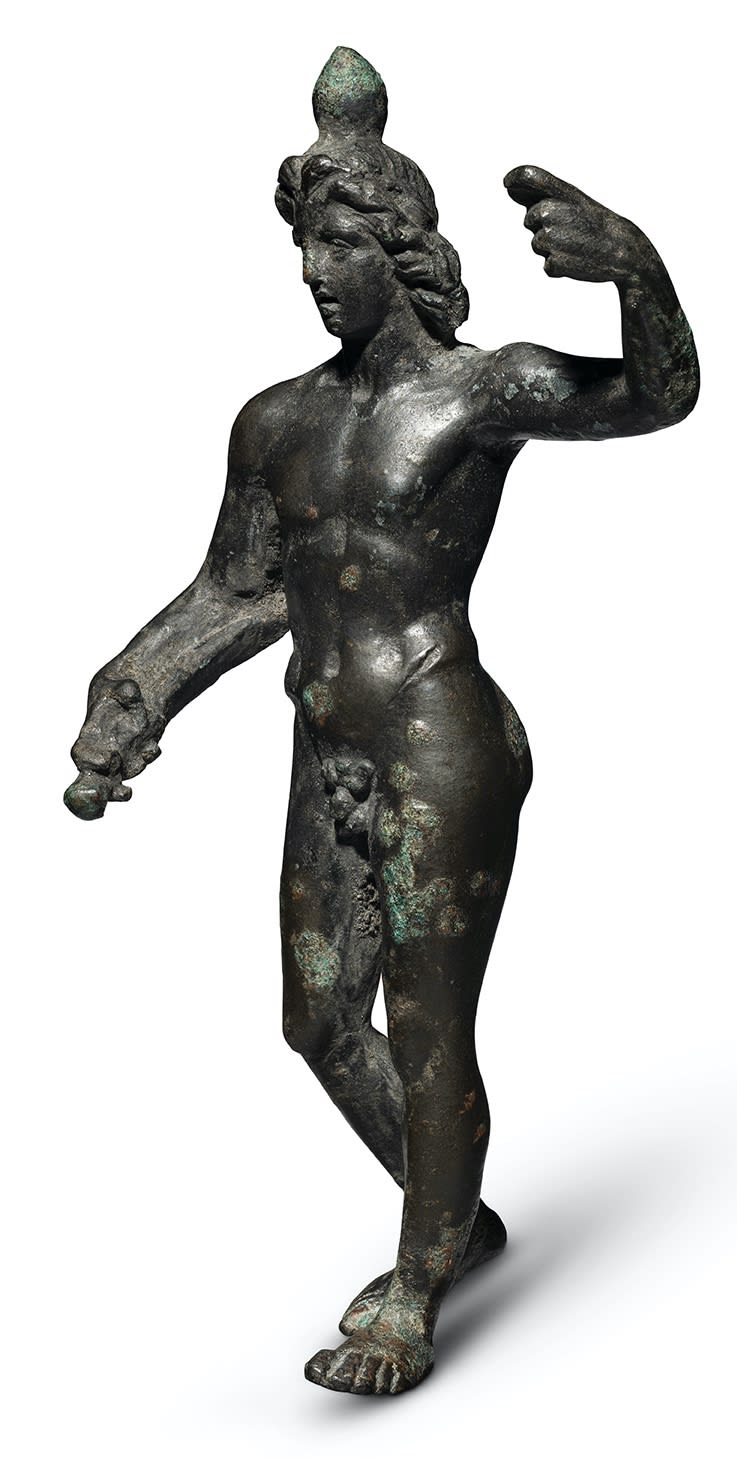
Alexander the Great, working in concert with his court sculptor Lysippos, can be seen to have co-opted these meanings, adding his own politically important imagery to represent a victorious ruler, Alexander Doryphoros. Alexander the Great’s portraiture promoted an incredibly powerful visual language to depict him as the epitome of a god-like heroic youth, as the descendent of Achilles he claimed he was.
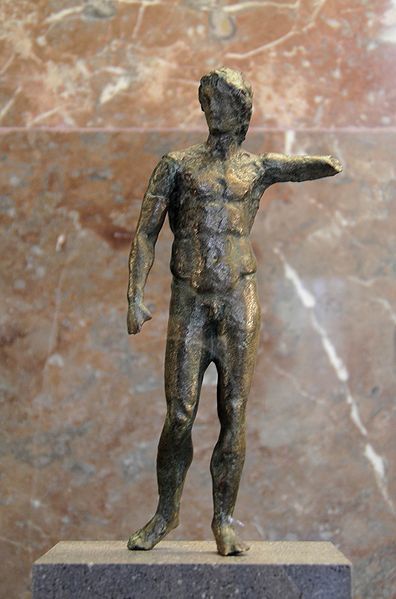
A HELLENISTIC FIGURE OF ALEXANDER DORYPHOROS
Late 4th century BC
Louvre Museum, Paris
Late 4th century BC
Louvre Museum, Paris
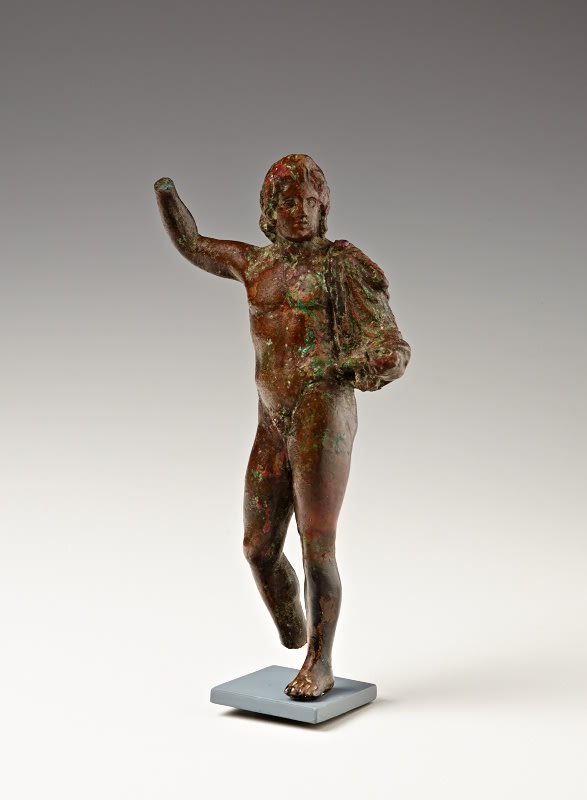
A HELLENISTIC BRONZE FIGURE OF ALEXANDER THE GREAT
Circa 4th - 2nd century BC
Stanford University, California
Stanford University, California
The surviving Alexander Doryphoros types, attributed to Lysippos, assert an image of a king whose authority over his ‘spear-won’ land is a gift from the gods. He is shown in a relaxed yet mobile posture, spear-bearing, sometimes holding a sword, heroic muscular nudity, lightly curling hair, the head tilted. According to Andrew Stewart, such statues ‘simultaneously flaunted the source of his power (his physical and martial prowess) and served as icons of his personal dominion over Asia….. By successfully manipulating Greek society’s central symbolic form, these portraits transformed the nude, youthful, heroic victor of surpassing arete into the charismatic young king of Asia’: A. Stewart, Faces of Power, Alexander’s Image and Hellenistic Politics’, Berkeley, 1993, p. 167.
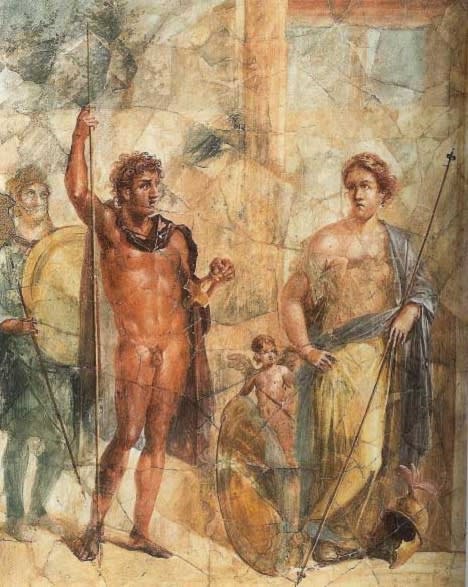
A ROMAN FRESCO DEPICTING THE MARRIAGE OF ALEXANDER THE GREAT
AND STATEIRA AS ARES AND APHRODITE
Circa 1st century AD
National Archaeological Museum, Naples
Circa 1st century AD
National Archaeological Museum, Naples
The Kallos bronze must be seen in the light of this iconography. According closely with the various surviving types of Alexander Doryphoros bronzes, the subject may certainly be seen as Alexander. The bronze bears features of both the Stanford and Fouquet types of the Alexander Doryphoros: the sheathed sword with hilt forward can be seen in the Stanford Type, with the posture and total nudity paralleled in the Fouquet.
Surviving Alexander Doryphoros types can further vary through the addition of specific attributes to show Alexander in the guise of a particular deity, or to make a more focussed political statement. As in this example, where an unusual oval shaped attribute on his head may perhaps be derived from another hitherto unknown sculptural type, there are also bronzes where he wears a Phrygian cap indicating his Macedonian background, a crown of rays as Alexander-Helios, or an egg-like cap as Alexander-Dioskouros, where Alexander is presented in the guise of a son of Zeus. Alexander pronounced himself the son of Zeus, quite literally a ‘Dioskouros’ and the iconography of the Dioskouroi by the Hellenistic period became closely interlinked with that of Alexander, with the twins often depicted holding a spear each, and sometimes even with an upturned sword as is so distinctive of the Alexander Doryphoros.
The image of Alexander through his program of portrait sculpture conveys a multitude of messages but the Alexander Doryphoros encapsulates his assertion of martial arete, his god-given personal power and victory; it is a potent symbol of a conqueror, of his dominion, in an unequivocal visual language entirely understood by a Greek viewer.
Surviving Alexander Doryphoros types can further vary through the addition of specific attributes to show Alexander in the guise of a particular deity, or to make a more focussed political statement. As in this example, where an unusual oval shaped attribute on his head may perhaps be derived from another hitherto unknown sculptural type, there are also bronzes where he wears a Phrygian cap indicating his Macedonian background, a crown of rays as Alexander-Helios, or an egg-like cap as Alexander-Dioskouros, where Alexander is presented in the guise of a son of Zeus. Alexander pronounced himself the son of Zeus, quite literally a ‘Dioskouros’ and the iconography of the Dioskouroi by the Hellenistic period became closely interlinked with that of Alexander, with the twins often depicted holding a spear each, and sometimes even with an upturned sword as is so distinctive of the Alexander Doryphoros.
The image of Alexander through his program of portrait sculpture conveys a multitude of messages but the Alexander Doryphoros encapsulates his assertion of martial arete, his god-given personal power and victory; it is a potent symbol of a conqueror, of his dominion, in an unequivocal visual language entirely understood by a Greek viewer.

A ROMAN MARBLE FIGURE OF A DIOSKOUROS
Circa 1st - 2nd century AD
Santa Barbara Museum of Art, California
Circa 1st - 2nd century AD
Santa Barbara Museum of Art, California